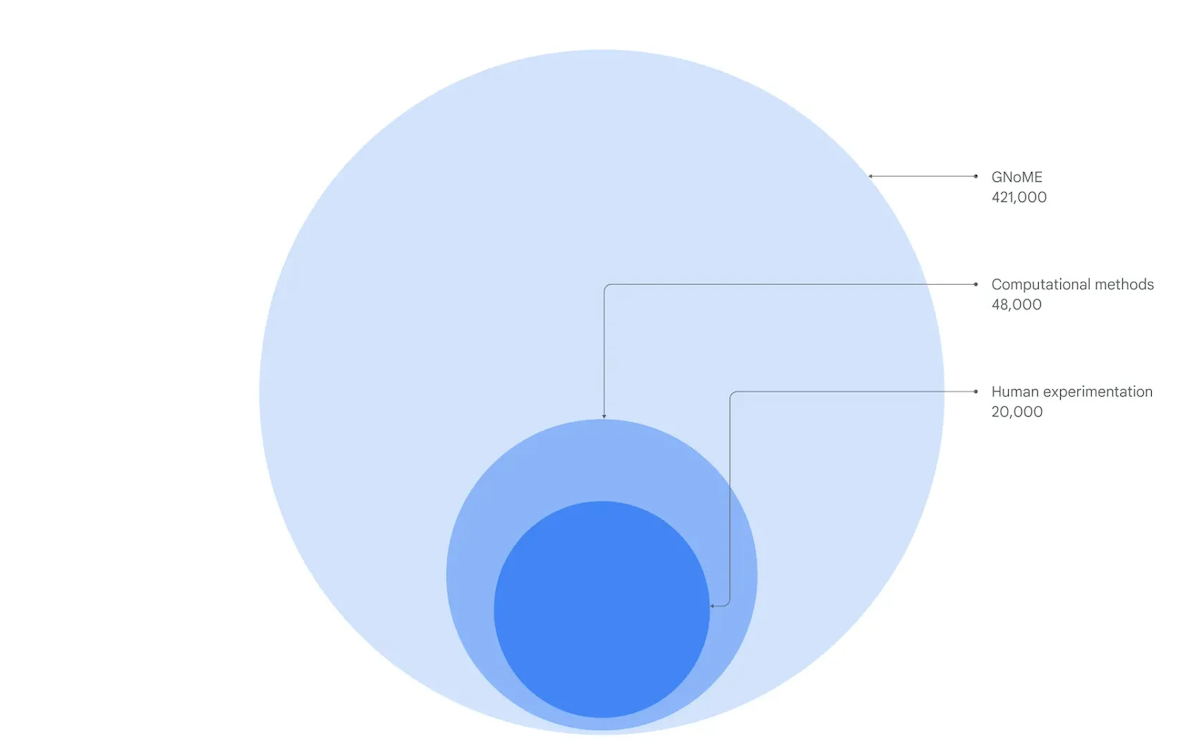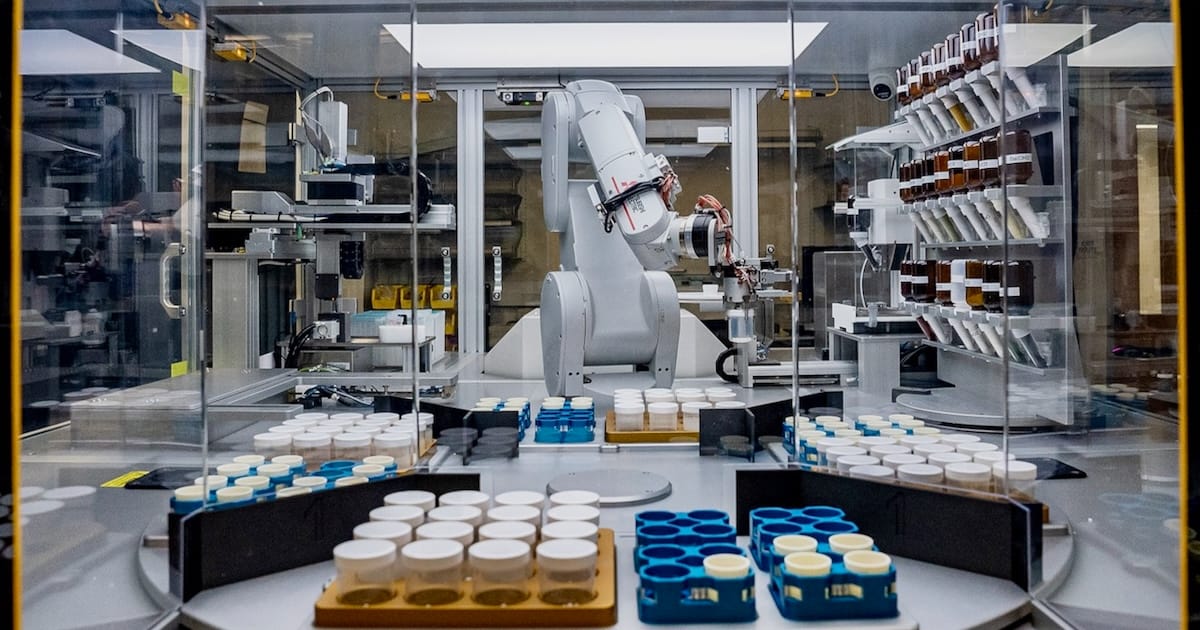
Whatever happened to gnomes?
It’s been a couple decades since I’ve seen or heard a thing about gnomes.
These small mystical creatures, full of character and delight, were sadly maligned due to the unfortunate spread of plastic or ceramic garden gnomes in the 1970s.
The real gnomes must have lowered their heads with great disappointment.
After all, these magical creatures have been around since the 16th century, and their tales are full of lore and adventure.
How could they possibly stomach being represented by a plastic figurine… plopped into some sad front yard landscaping?
Such a travesty…

I was reminded of the plight of gnomes when reading some recent research in Nature…
The research was published late last month by a team at DeepMind, the division of Google based in the U.K. responsible for so many extraordinary breakthroughs in artificial intelligence over the last few years.
The paper was about gnome — or GNoME — which stands for Graph Networks for Materials Exploration.
Quite the acronym, but very fitting…
After all, the substance of the work is just incredible — as if only magic could produce it.
This recent breakthrough using AI is just incredible…
Using artificial intelligence (and a massive amount of computing power), DeepMind was able to develop 2.2 million new kinds of inorganic materials. Specifically crystals — many of which are capable of powering a new wave of technological development.
What’s important is that DeepMind’s new materials were not known… and they had never been discovered previously.
Yet they hold incredible potential for a wide range of industries.
These types of materials — crystals — are used widely in semiconductor technology, supercomputing, superconductors, as well as in battery materials.
However, there’s a catch. And here’s where DeepMind’s discovery gets even better…
To power such high tech, the crystals must be stable. In other words: They must be able to maintain their physical and chemical properties over time, despite operating conditions (i.e. heat, cold, vibrations).
Which is what makes DeepMind’s discovery so extraordinary…
DeepMind was able to use its AI to determine which of those 2.2 million new materials are the most stable…
In the end, it was able to “short list” 380,000 new crystals that are the most stable and that show promise for future technology applications.
DeepMind estimates that this novel discovery is equivalent to 800 years’ worth of knowledge…
And the company was able to use artificial intelligence to discover this knowledge in a matter of months.
A discovery like this will allow several industries to push the outer limits of what is possible… and will almost certainly lead to new breakthroughs that leverage these inorganic materials.
In fact, it’s already begun…
To put the scale of this discovery into perspective, we have to look at what was available prior to DeepMind’s work with an AI…

Prior to this announcement, through human experimentation, researchers had discovered about 20,000 materials.
With additional computational methods, that expanded to 48,000 total.
But with DeepMind’s breakthrough, there are now about 421,000 total “stable” materials to work with.
Which means DeepMind basically multiplied by a factor of 10 the world’s knowledge base of stable materials, seemingly overnight.
And the industry hasn’t wasted much time…
As of last month, researchers were able to take DeepMind’s database of new materials and create 736 of them in real life.
In other words: They took the material structures discovered by AI… and manufactured them in a lab, bringing them to life.
This is exciting because, historically, materials development has been a slow, arduous process. Breakthroughs have been few and far between.
And advancements in an area like battery materials, for example, tend to come with small, incremental improvements every year or two, as opposed to large leaps in performance.
Lithium-ion batteries were a massive materials science breakthrough back in the 1970s, and just look at how widely used they are today — from digital watches to electric vehicles.
And in 2004, graphene was discovered. It is such a unique material that is almost weightless, and yet it exhibits 200-times the strength of steel.
Applications for graphene are still in development in a wide number of industries like energy, consumer electronics, medicine, sports, semiconductors, and even fabrics.
More recently, in 2012, the use of perovskite to create a dramatically higher efficiency for solar cells was developed. This is still a work in progress, as researchers are working towards making perovskite a more stable material, which is necessary for scaling the manufacturing of solar cells.
These are three of the most important examples over the last 50 years that came about from tedious human trial and error.
We can compare that to DeepMind, which just made 380,000 new stable materials discoveries… in a matter of months.
Adding to the excitement is that humans are no longer the only ones in the lab…
Robotics and automation software can be used to synthesize the most promising new materials quickly.
Said another way, humans don’t have to painstakingly work in laboratories for years to synthesize hundreds of thousands of new materials in order to test their characteristics and applications.
Below is a photo of a robot from A-Lab, a facility at Berkeley Lab.
A robotic arm, powered by artificial intelligence and the new materials database from DeepMind, is capable of whipping up these promising new materials for evaluation.

Researchers and companies can now go as fast as they like.
Simply scale up with more AI-powered robotic systems, and the pace of technological development accelerates.
And that’s precisely what will happen next…
Because there’s one final spark of magic to this story.
The research I’ve been discussing has been open sourced through The Materials Project, which is a multi-institution organization focused on accelerating the invention of new materials.
In other words: This newfound gold mine of new materials has been made available to the world free of charge.
The result of this flood of new information will be new materials breakthroughs coming from academic and research organizations, as well as new startups looking to commercialize the most promising materials candidates.
We’re going to see some incredible investment opportunities here. Especially with private, early stage companies with the potential to revolutionize their industries.
And we’ll also see some well-established powerhouses, with strong research and development budgets, aggressively investing to bring some of these new materials to market.
The obvious industries where this will happen are electronics, semiconductors, computing systems, and battery technology. This will span everything from consumer electronics to industry-scale power storage.
Just like our mystical gnomes, artificial intelligence brings wizardry to life.
It is capable of doing things that are humanly impossible. And it’s accelerating technological breakthroughs at a pace we’ve never imagined.
This will bring extraordinary benefit to humanity.
Questions, comments, feedback? We love to hear it. Please let us know right here.